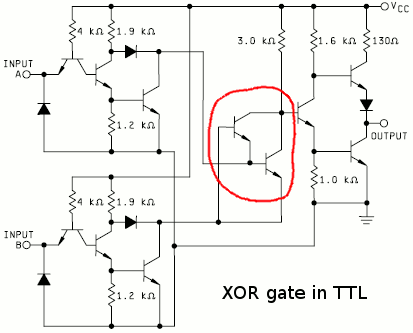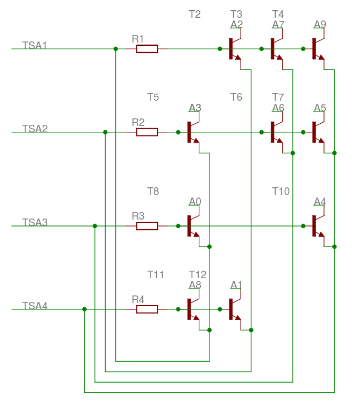In the log Bipolar XOR gate with only 2 transistors we see the legendary interlocked transistor gate :

Then this HAD post describes a very clever driving scheme :

Then it became clear... Under the right driving situation, a transistor (with its base resistor) is a ANDN gate !
Why does it matter ? Because this could greatly help to implement circuits such as this 7-segments decoder:

This is a sort of "slow" circuit where parts count matters more than speed (hard saturation is not an issue) so hacks like this will help a lot :-)
For the above "arbitrary logic" array, wired-oring will also save parts. All we have to do is "solve/reduce with ANDN". Who wants to play that game with me ? :-D
 Yann Guidon / YGDES
Yann Guidon / YGDES
Discussions
Become a Hackaday.io Member
Create an account to leave a comment. Already have an account? Log In.
For this it is important to keep in mind that bipolar transistors also work in reverse mode. So the input/output isolation of the ANDN gate is not always given. I almost fell for this several times, but luckily i used spice at first to simulate my designs.
Are you sure? yes | no
In my project https://hackaday.io/project/160177-alu-in-dctl-technology I use both: the 2-transistor XOR gate and the ANDN gates. Simply said, when used with base resistors it is RTL logic, and without base resistors it is DCTL logic. For 7-segments I would try DCTL logic because it hardly uses any resistors....
Are you sure? yes | no
but resistors are not a real problem, and it's good to keep the base current in check...
Anyway, I'm really looking forward to read your next logs about your cool ALU :-D
Are you sure? yes | no